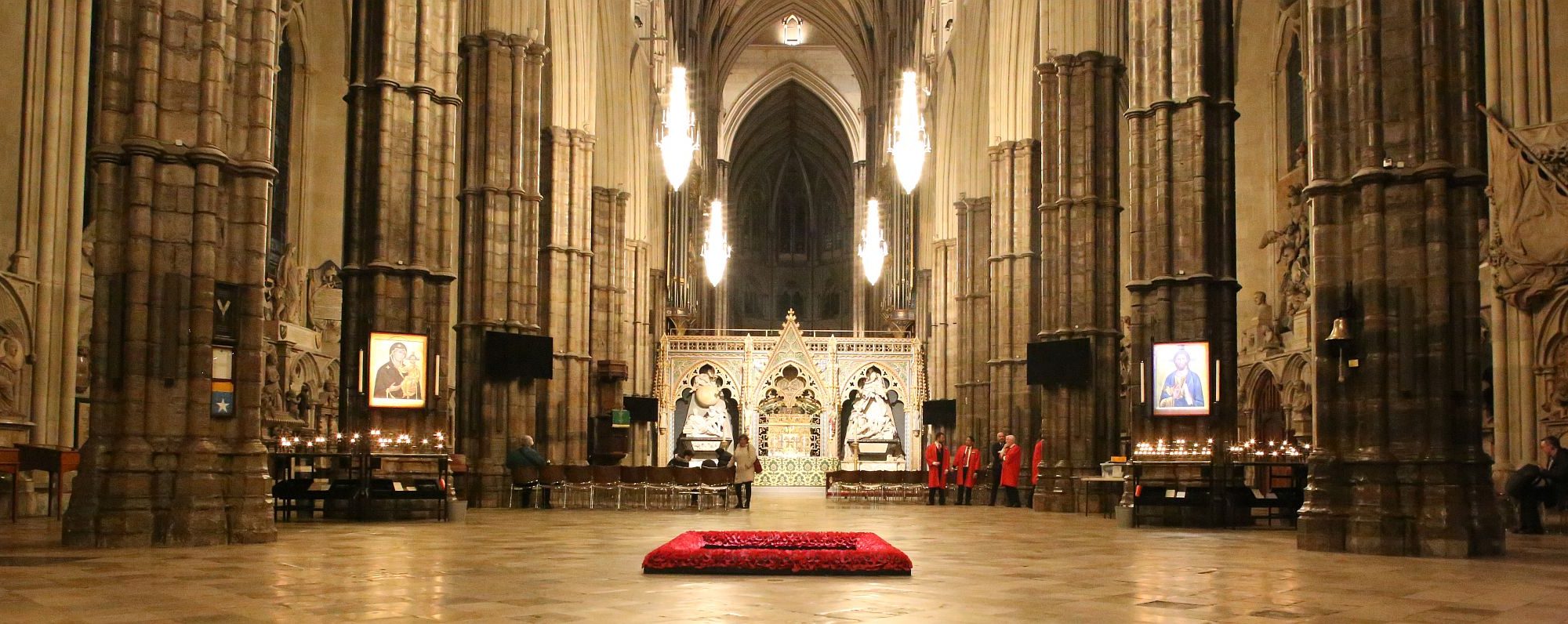In 1916, whilst serving in the trenches of World War One, the Reverend David Railton saw a rough cross marking a grave in a garden marked with “An Unknown British Soldier” which sparked an idea.
Many soldiers were killed in WW1 and not all could be identified because their bodies were so badly damage. Some of the killed just simply sank into the mud and were never seen again. This meant that huge numbers of families had no grave to visit.
in 1920 David Railton wrote to the Dean of Westminster Abbey in London to suggest that an unknown body be buried in the Abbey to represent all those who had been lost and to give the families, and nation, a place to focus their grief.
Four, some accounts say six, bodies were exhumed from across the battlefields of France and then taken to a chapel in St Pol, Nothern France, which was the British Army Headquarters.
Two British Officers, entered the chapel and selected a body which they then placed in a plain coffin.
The following morning chaplains of all faiths held a joint service and the coffin was taken to the port of Boulogne where it rested overnight. The following day the coffin was placed inside another coffin which had been brought over from England. It was made of oak from Hampton Court Palace with a sword from the Tower of London placed upon the top.
The coffin was then embarked, to the sound of an Admiral’s pipe, on the Royal Navy ship HMS Verdun to be taken across the English Channel to Dover escorted by six battleships. Gun salutes were fired from both Boulogne Fort and Dover Castle
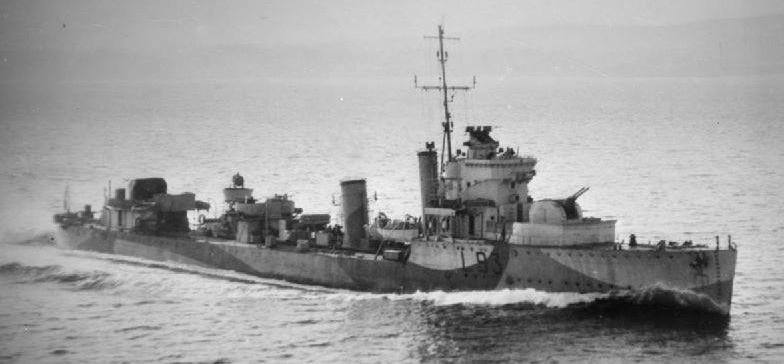
From Dover, a special train brought the coffin to Victoria station in London. The parcel van that carried the coffin can be seen today at the Kent and East Sussex Railway. It was the same van used to bring back Nurse Edith Cavell and Captain Fryatt.

The Unknown Warrior then rested overnight in the van at Victoria Station.
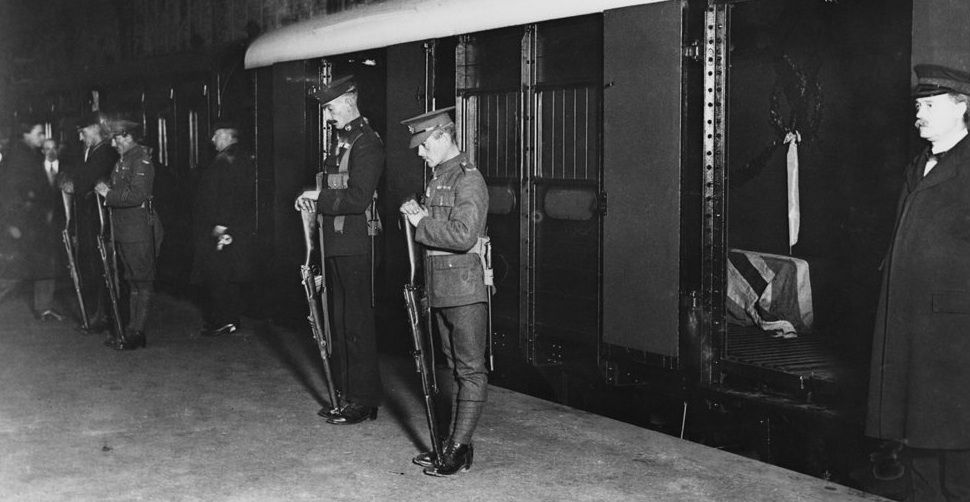
The 11th November 1920 was the day of the Unknown Warrior’s burial in Westminster Abbey. Huge crowds gathered to watch the coffin as it was taken from Victoria Station to Westminster Abbey, many families taking comfort in the possibility that it could be their lost family member in the coffin upon which the whole nation’s grief was focused.
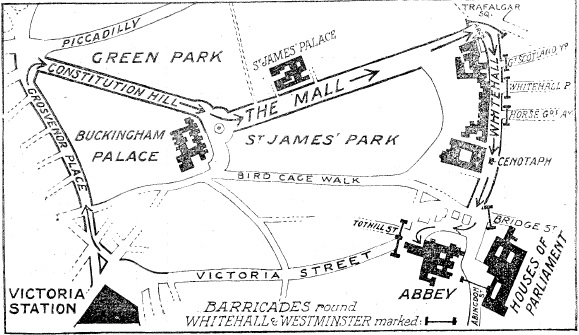
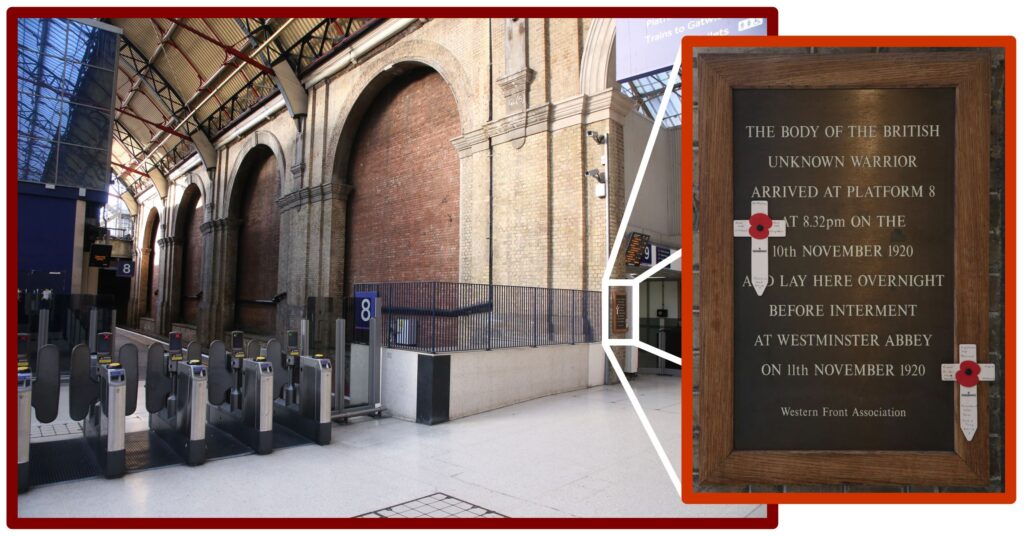
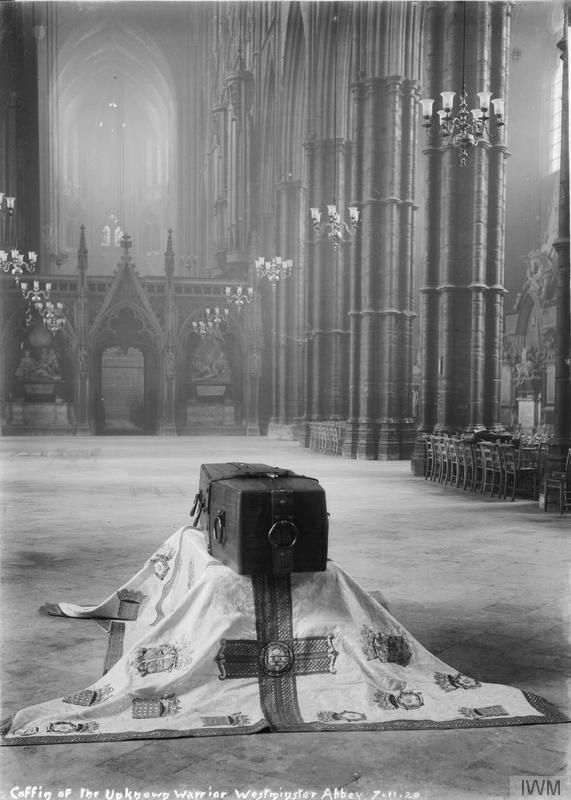

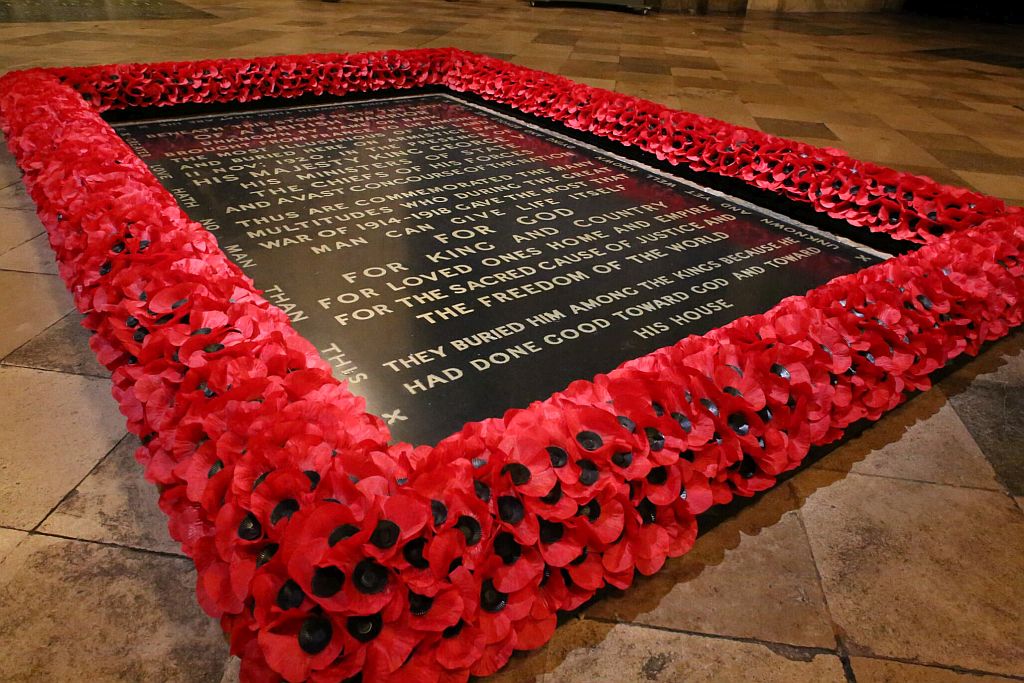
The writing on the tomb is brass from bullets and shell casing collected from across the battlefields of World War One and melted down. The stone slab is of Belgian marble and the earth surrounding the coffin is also collected from the battlefields of World War One.
By convention nobody, including royalty, steps on the tomb. The then Elizabeth Bowes-Lyon, later The Queen Mother, laid her wedding posy of flowers on the tomb as she left the Abbey having married the future King George VI in memory of her brother Fergus who was killed at the Battle of Loos in 1915. Royal brides since have maintained the tradition.
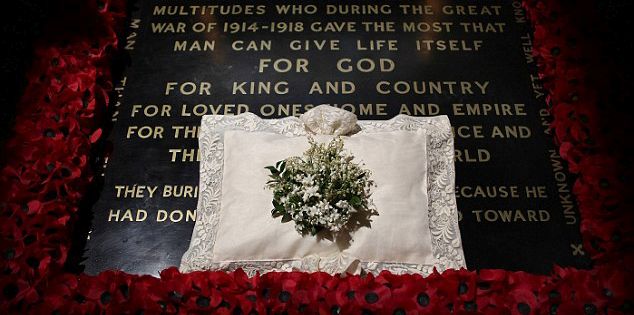

The United States of America presented The Unknown Warrior with the Congressional Medal of Honour, their highest award for bravery – comparable to the Victoria Cross. It hangs on a pillar close by (see picture above).
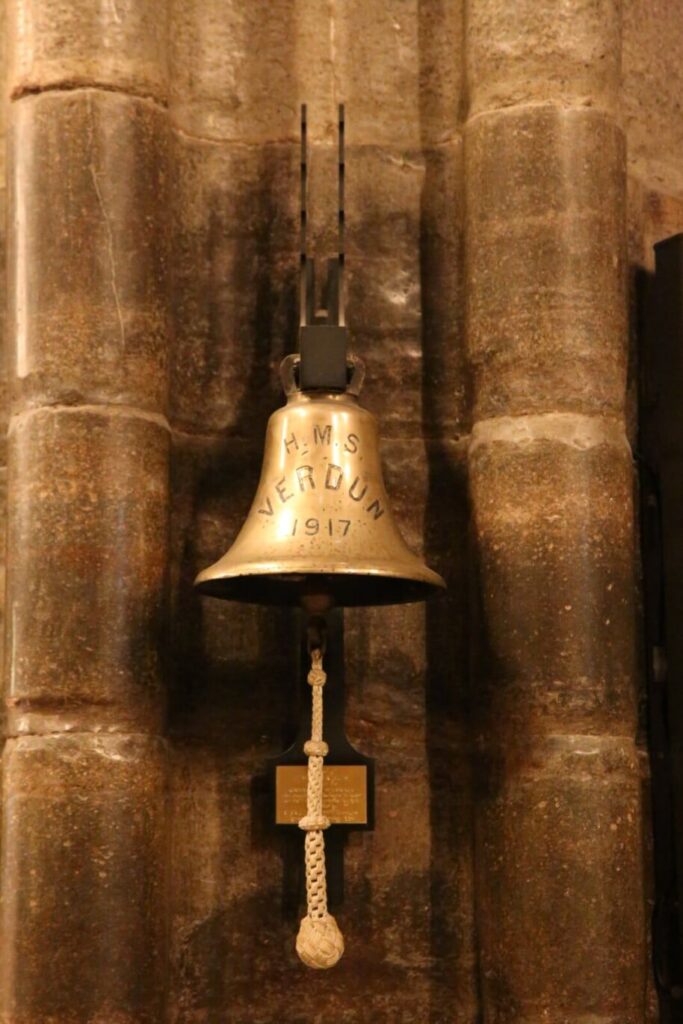
The ship’s bell from HMS Verdun, which carried The Unknown Warrior from France, hangs on a pillar close by.
